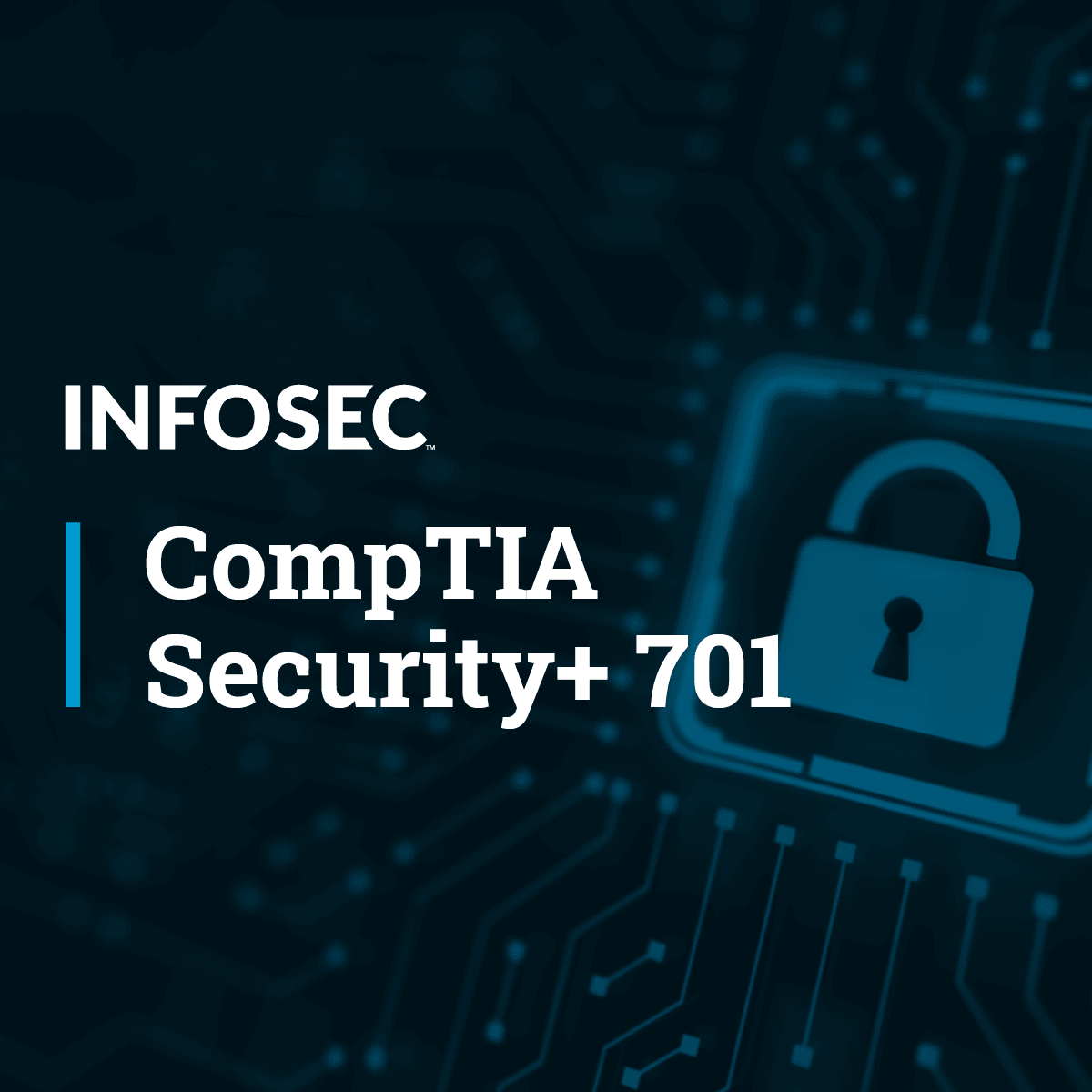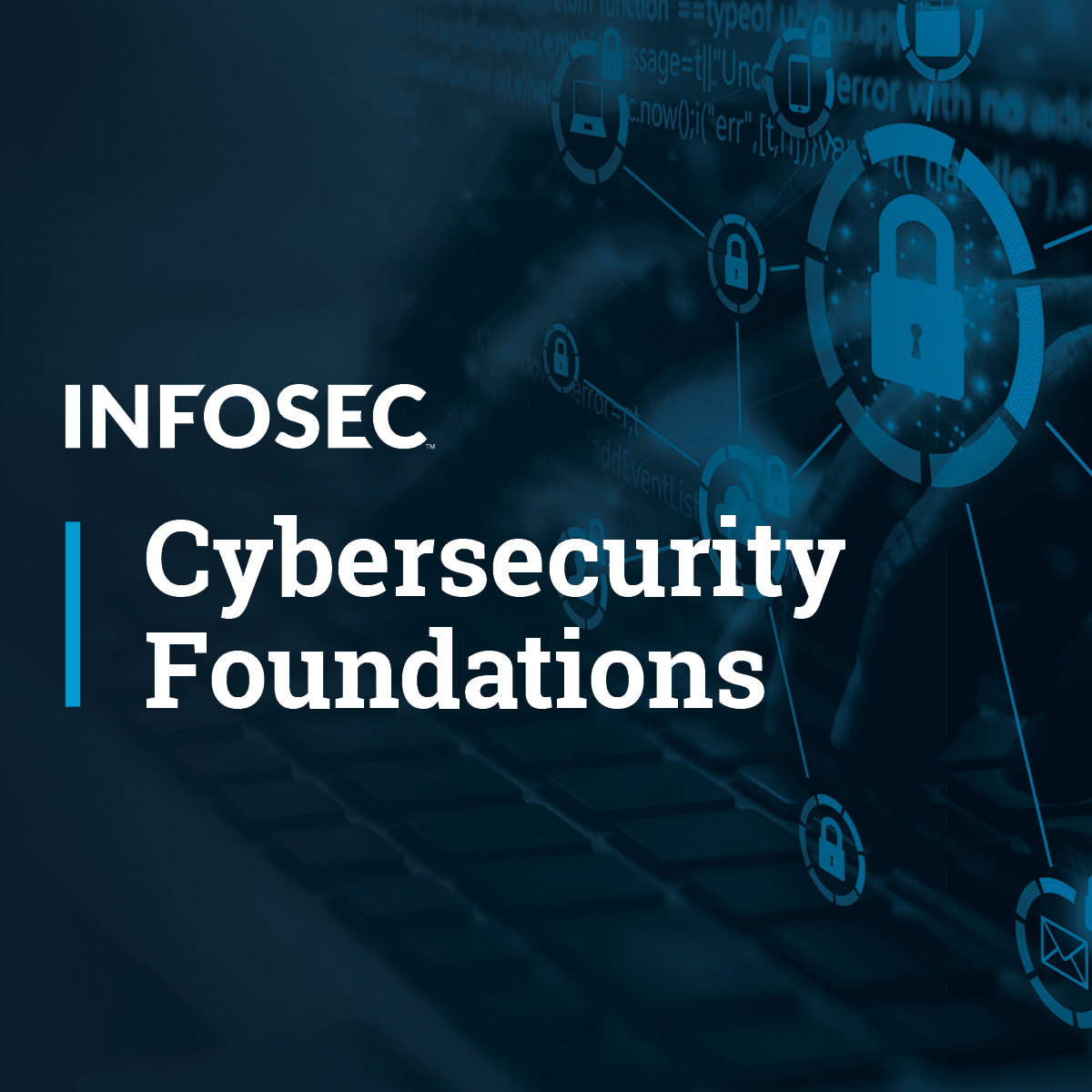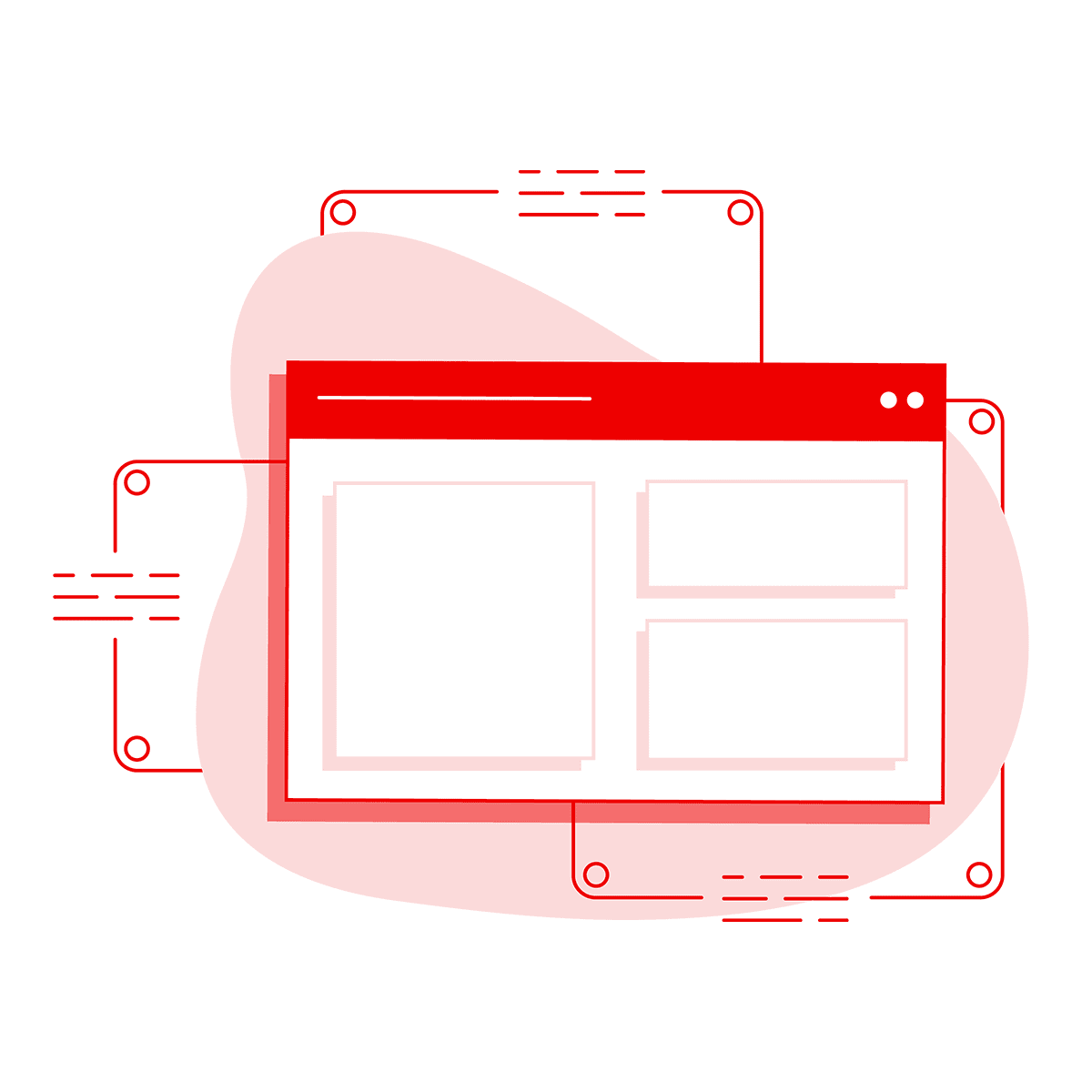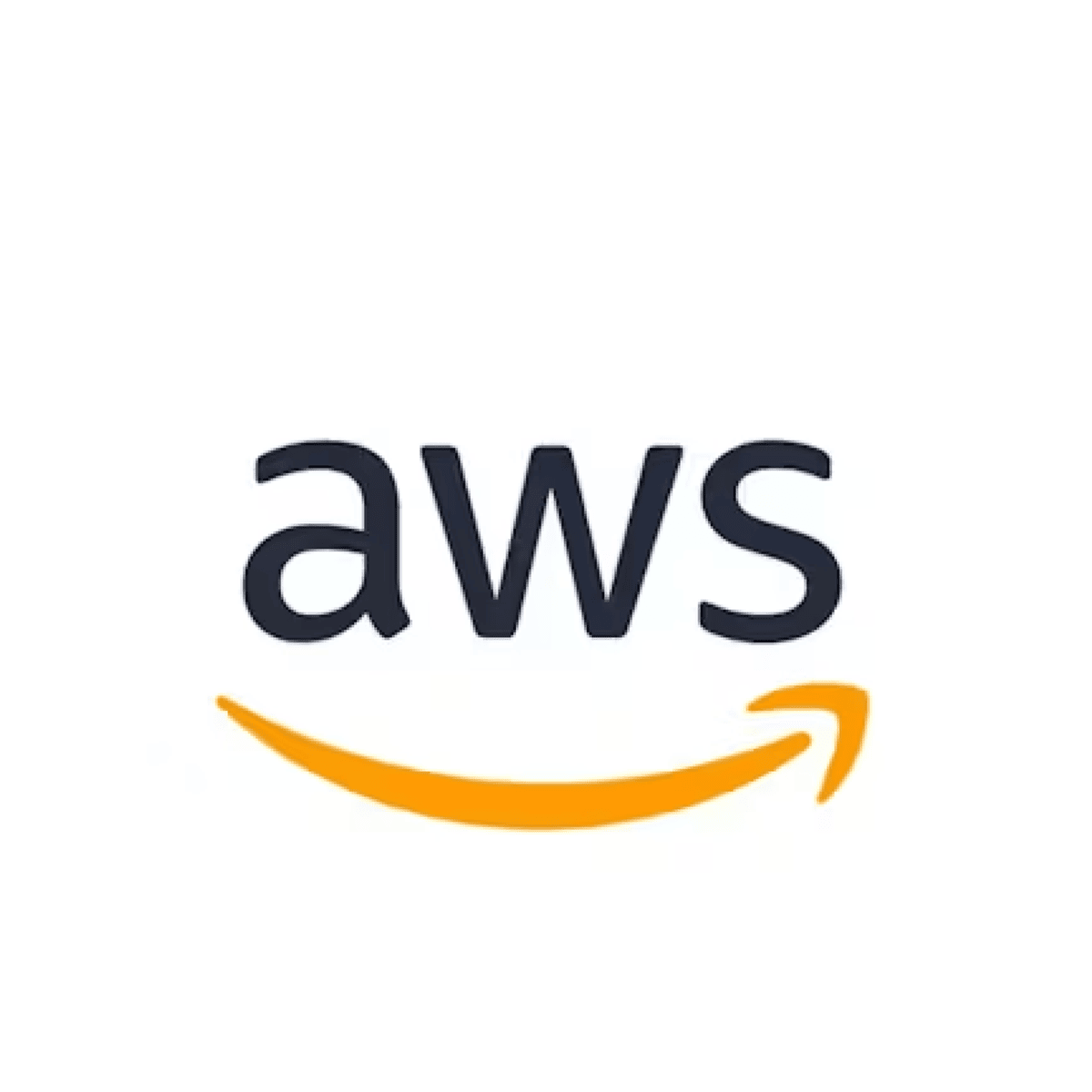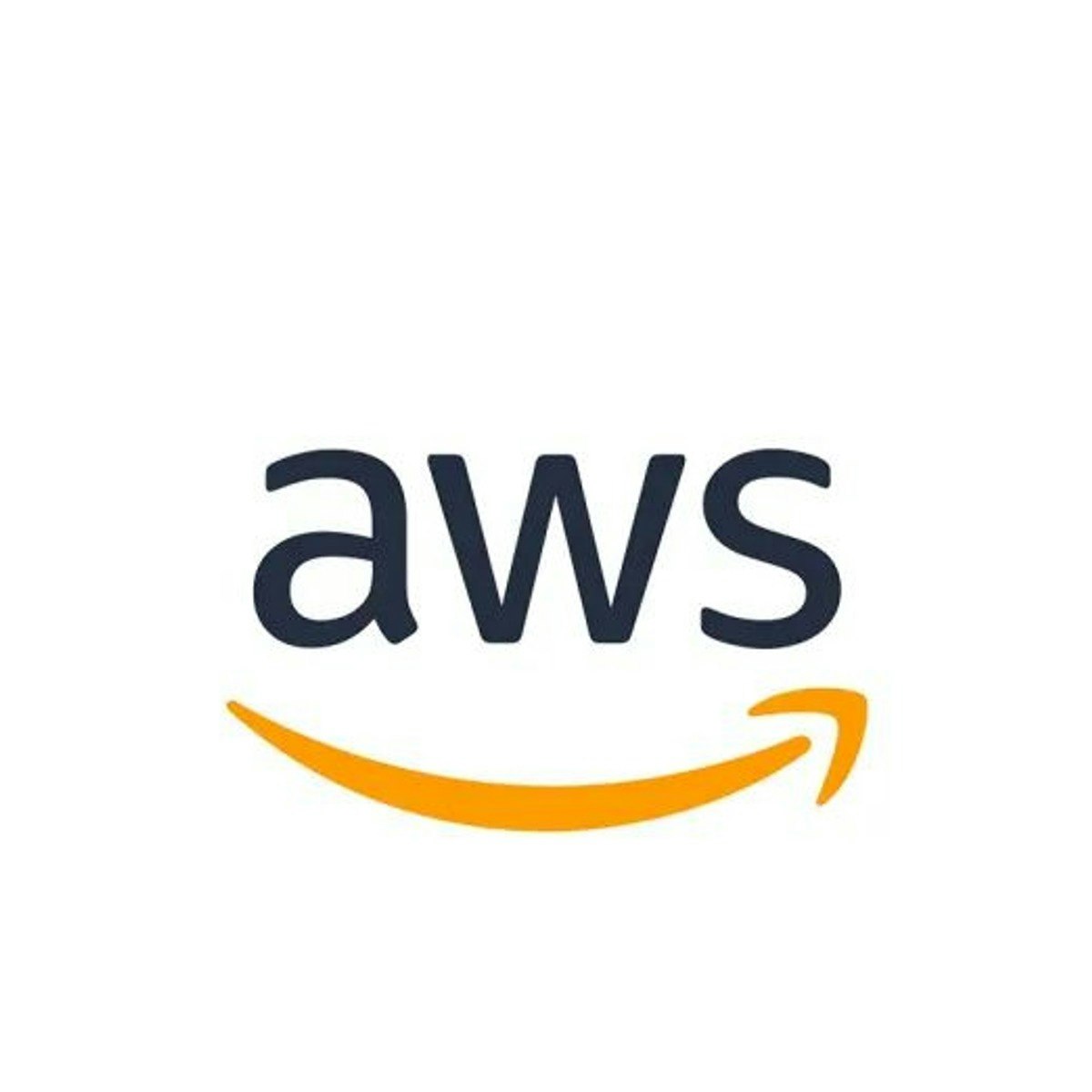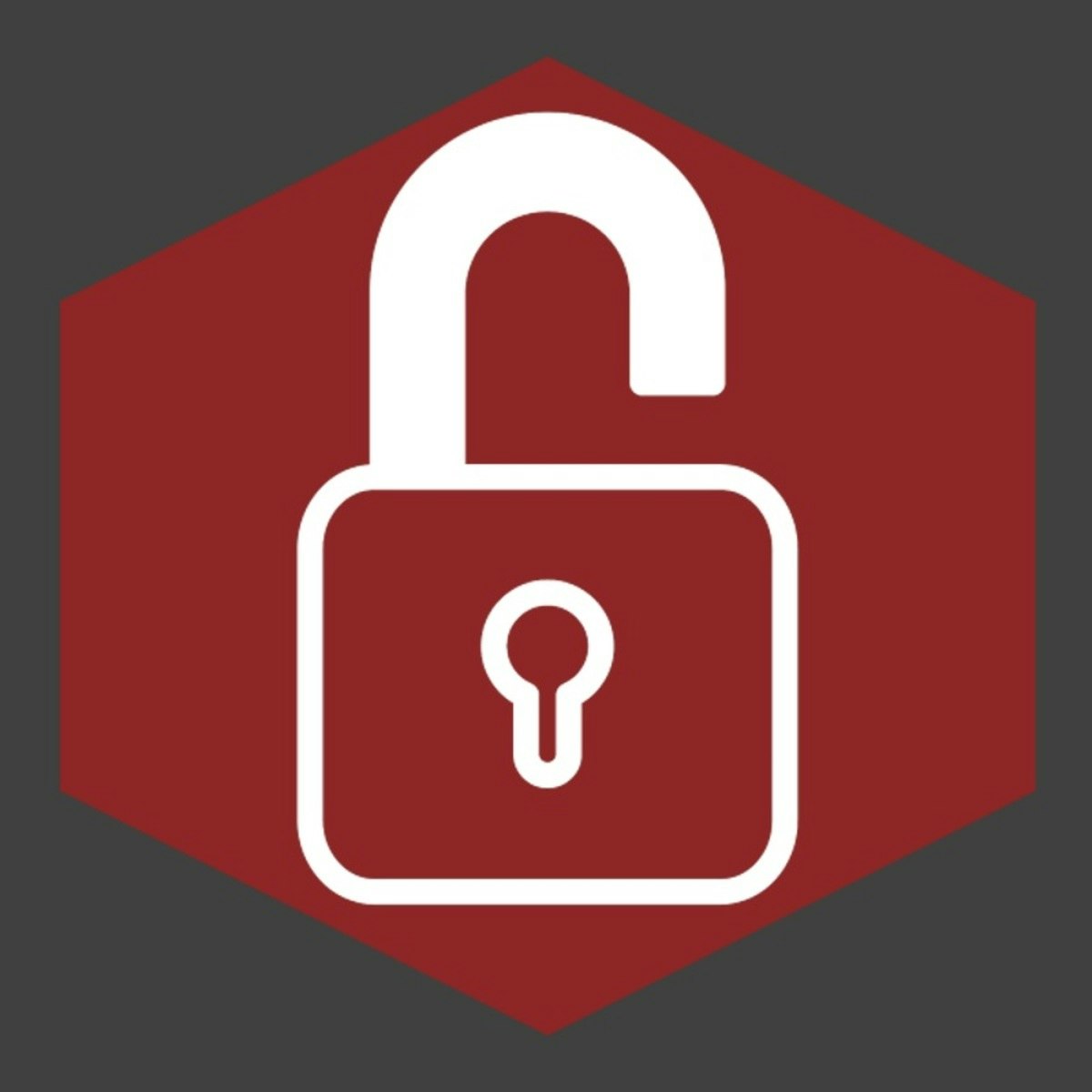Systems Administrator
Comprehensive Guide to the Systems Administrator Career
A Systems Administrator, often called a SysAdmin, is an information technology (IT) professional responsible for the upkeep, configuration, and reliable operation of computer systems. This role is crucial in ensuring that an organization's IT infrastructure runs smoothly, supporting the daily operations and overall objectives of the business. SysAdmins work with both hardware and software, managing everything from individual computers to large-scale network systems.
Working as a Systems Administrator can be engaging due to the dynamic nature of IT. SysAdmins are constantly problem-solving, from troubleshooting unexpected outages to implementing new technologies. The role often involves a blend of technical expertise and strategic thinking, as they ensure systems are not only functional but also secure and scalable to meet future demands. The satisfaction of keeping critical systems running efficiently and protecting an organization's digital assets can be a significant motivator.
Individuals new to the IT field or considering a career change might find the role of a Systems Administrator to be a rewarding path. It offers a chance to be at the forefront of technological advancements and play a vital role in a company's success. While the work can be demanding, particularly when dealing with system emergencies, it also provides continuous learning opportunities and the ability to make a tangible impact.
Introduction to System Administration
This section will delve into the specifics of what a Systems Administrator does, explore the historical context of the role, and identify the key industries that rely on these IT professionals.
Definition and core responsibilities of a System Administrator
A Systems Administrator is an IT professional who ensures an organization's computer systems are well-maintained, function correctly, and meet the business's needs. Their core responsibilities are broad and vital to the daily operations of a company. They are tasked with installing, upgrading, and configuring both computer hardware and application software. This includes managing user accounts, ensuring system permissions are correctly assigned, and resetting passwords when necessary.
SysAdmins also play a critical role in troubleshooting technical issues, providing support to employees to resolve problems. They are responsible for maintaining the security of the systems, which involves applying updates and patches, monitoring for vulnerabilities, and implementing security controls. Furthermore, they evaluate and optimize system performance, ensuring that the network infrastructure, including local area networks (LANs), wide area networks (WANs), and servers, is running efficiently.
Depending on the organization's size, a SysAdmin's duties might overlap with those of a network administrator. However, a SysAdmin typically focuses more on servers and computer systems, whereas a network administrator concentrates on the network infrastructure itself, such as routers and switches. In smaller companies, these roles may be combined, while larger organizations often have distinct positions for each.
Historical evolution of the role in IT infrastructure
The role of the Systems Administrator has evolved significantly alongside the advancements in information technology. In the early days of computing, system management was often handled by the programmers or engineers who built and operated the machines. As computer systems became more complex and integral to business operations, the need for dedicated personnel to manage these systems emerged.
Initially, SysAdmins were primarily focused on maintaining mainframe systems. With the advent of personal computers and client-server architectures in the 1980s and 1990s, the scope of their responsibilities expanded to include managing networks of interconnected computers, user workstations, and a growing array of software applications. The rise of the internet further transformed the role, introducing new challenges and opportunities related to web servers, network security, and remote access.
In recent years, the proliferation of cloud computing, virtualization, and DevOps practices has continued to reshape the System Administrator's landscape. While core responsibilities like ensuring uptime and security remain, modern SysAdmins are increasingly involved in managing virtualized environments, automating tasks, and working closely with development teams to deploy and maintain applications. The focus has shifted towards more strategic tasks, leveraging new tools and methodologies to manage increasingly complex and distributed IT infrastructures.
Key industries employing System Administrators
Systems Administrators are essential across a wide array of industries due to the near-universal reliance on technology for modern operations. The financial services sector, including banks, investment firms, and insurance companies, heavily employs SysAdmins to manage their complex network infrastructures and database systems, ensuring the secure and stable flow of sensitive data. Similarly, the healthcare industry, encompassing hospitals, clinics, and medical centers, relies on SysAdmins to maintain critical systems for electronic health records, medical imaging, and communication, with a strong emphasis on data security.
Government agencies at federal, state, and local levels are also significant employers of Systems Administrators. These professionals manage the IT infrastructure necessary for public services, from defense contractors to local municipalities. The telecommunications industry, with major companies like AT&T and Verizon, requires SysAdmins to oversee their extensive network infrastructure, data centers, and communication systems.
Other key industries include computer systems design firms, educational institutions (colleges, universities, and professional schools), and manufacturing companies. Legal firms also utilize SysAdmins to manage their IT infrastructure, document management systems, and network security. Essentially, any organization that operates with a significant IT backbone will likely have a need for skilled Systems Administrators to ensure their systems run efficiently and securely.
For those looking to build a foundational understanding of system administration, particularly in a multi-user environment and infrastructure services, certain online courses can be highly beneficial. These courses can help learners transition from managing a single computer to overseeing an entire fleet of systems.
Core Skills and Competencies
To excel as a Systems Administrator, a combination of strong technical abilities and well-developed soft skills is essential. This section outlines the critical skills and the value of certifications in this field.
Technical skills: network management, OS proficiency
A Systems Administrator must possess a robust set of technical skills to effectively manage and maintain an organization's IT infrastructure. Proficiency in network management is fundamental. This includes understanding network protocols, configuring network hardware like routers and switches, and managing network segments such as LANs and WANs. They need to be adept at troubleshooting network issues to ensure seamless connectivity and performance.
Operating System (OS) proficiency is another critical area. SysAdmins should be comfortable working with various operating systems, commonly including Windows, Linux, and sometimes macOS. This involves installing, configuring, updating, and patching these systems. A deep understanding of OS-level security, user account management, and system performance tuning is also vital.
Beyond these core areas, SysAdmins often need skills in database administration basics, server management (both physical and virtual), and scripting for automation using languages like PowerShell or Bash. Familiarity with hardware components, software installation, and data backup and recovery procedures are also key components of their technical toolkit.
To gain hands-on experience with command-line interfaces, which are crucial for system administration, several introductory courses are available. These can help beginners and those looking to refresh their skills in using powerful tools like the Unix shell and Bash scripting.
For those looking to deepen their understanding of Linux, a widely used operating system in server environments, a comprehensive introductory course can be invaluable. Similarly, mastering PowerShell is essential for Windows-based system administration.
Understanding scripting and automation is a key technical skill for modern Systems Administrators. Books focusing on Bash scripting can provide a solid foundation.
Soft skills: problem-solving, communication
While technical expertise is paramount, soft skills are equally crucial for a Systems Administrator's success. Strong problem-solving abilities are at the forefront. SysAdmins are frequently faced with unexpected issues, from system outages to security breaches, and they must be able to diagnose problems quickly and implement effective solutions under pressure. This requires analytical thinking and a methodical approach to troubleshooting.
Effective communication skills are also vital. SysAdmins need to communicate technical information clearly to both technical and non-technical audiences. This includes explaining complex issues to end-users, collaborating with other IT team members, documenting procedures, and reporting system status to management. Good interpersonal skills help in providing user support and training.
Organizational skills and attention to detail are important as SysAdmins often juggle multiple tasks and manage vast amounts of data and configurations. The ability to prioritize workloads, manage time effectively, and maintain accurate documentation contributes significantly to their efficiency and the overall stability of the IT systems they oversee. Adaptability and a willingness to learn are also key, as technology is constantly evolving.
Certifications (e.g., CompTIA, Microsoft, Cisco)
Certifications can play a significant role in a Systems Administrator's career, serving as a validation of their technical skills and knowledge. While not always mandatory, especially for those with extensive experience, certifications can provide a competitive edge, particularly for individuals new to the field or seeking to advance. Employers often view certifications as evidence of a commitment to professional development and an understanding of current technologies.
Several organizations offer well-recognized certifications relevant to system administration. CompTIA certifications like CompTIA A+, CompTIA Network+, CompTIA Security+, and CompTIA Server+ provide foundational and specialized knowledge. CompTIA Linux+ is particularly valuable for those working with Linux environments.
Microsoft offers a range of certifications, such as the Microsoft Certified: Azure Administrator Associate, which is crucial for professionals working with Microsoft's cloud platform. For those specializing in Linux, the Red Hat Certified System Administrator (RHCSA) is a highly respected credential. Cisco certifications, like the Cisco Certified Network Associate (CCNA), are beneficial for roles with a strong networking focus. Other notable certifications include those from VMware (e.g., VCP-DCV) for virtualization expertise and AWS (e.g., AWS Certified SysOps Administrator - Associate) for Amazon Web Services environments.
These credentials can help SysAdmins demonstrate proficiency in specific areas like cloud computing, cybersecurity, network administration, or virtualization, potentially leading to higher earning potential and more advanced roles.
For individuals aiming to validate their skills or specialize in particular areas, several certification-focused courses can provide targeted preparation. These courses often cover the specific objectives of exams like CompTIA Security+, Microsoft Azure Administrator, and AWS SysOps Administrator.
Foundational knowledge in networking and operating systems is crucial. Courses covering these fundamentals can serve as excellent preparation for more specialized certifications and roles.
Educational Pathways
Embarking on a career as a Systems Administrator can be achieved through various educational routes. Understanding these pathways can help aspiring professionals plan their journey into this dynamic IT field.
Degree programs: computer science, IT management
A bachelor's degree is often a typical requirement for Systems Administrator positions, particularly in corporate environments. Common degree fields include Computer Science, Information Technology (IT), IT Management, or a closely related area like computer engineering or electrical engineering. These programs generally provide a solid foundation in computer programming, networking principles, systems analysis and design, and database concepts.
A Bachelor of Science in Systems and Network Administration, if available, can offer a more specialized curriculum. However, a broader computer science degree can also equip individuals with a comprehensive understanding of the IT landscape, which is beneficial for a SysAdmin role. Coursework in these programs might cover topics such as hardware and software configuration, server administration, and software-defined networking. Some employers might also consider candidates with an associate's degree, especially if coupled with relevant experience or certifications.
While a degree can open more doors and potentially lead to quicker advancement, it's not always a strict prerequisite. Significant practical experience and strong technical skills can sometimes substitute for formal education, though this path might involve spending more time in entry-level roles to gain the necessary knowledge. For management roles within IT, a master's degree might be preferred by some employers.
For those exploring foundational computing concepts, often covered in early stages of degree programs, several online courses can provide a good starting point. These courses can introduce learners to the basics of computing and programming.
Vocational training and bootcamps
Vocational training programs and IT bootcamps offer an alternative, often faster-paced, route into the field of system administration. These programs are typically more focused on practical, hands-on skills and specific technologies directly applicable to a SysAdmin role. They can be an excellent option for individuals seeking to quickly gain job-ready skills or for career changers who want to pivot into IT without committing to a multi-year degree program.
Bootcamps, in particular, are known for their intensive, short-term curricula that immerse students in topics like network configuration, server management, cybersecurity fundamentals, and cloud platform administration. Many vocational schools and training centers also offer courses that prepare students for industry-recognized certifications, which can further enhance their employability. While these programs may not provide the same theoretical depth as a traditional degree, their emphasis on practical application can make graduates attractive to employers looking for candidates who can hit the ground running.
When considering vocational training or a bootcamp, it's important to research the program's reputation, curriculum, instructor experience, and job placement support. Success in these programs often requires significant dedication and a proactive approach to learning and networking. These pathways can be particularly effective when combined with self-study and a commitment to continuous learning to keep pace with the rapidly evolving IT landscape.
Many online platforms offer courses that align with the focused, skill-based approach of vocational training and bootcamps. Courses on specific operating systems or server technologies can be particularly useful.
Self-taught routes and continuous learning
The path of a Systems Administrator can also be forged through self-teaching, especially when coupled with a strong commitment to continuous learning. The IT field is characterized by its rapid evolution, making ongoing education a necessity regardless of one's initial educational background. For self-taught individuals, this means diligently keeping up with new technologies, security threats, and best practices through online resources, forums, technical publications, and hands-on experimentation.
Many successful SysAdmins have built their expertise by setting up home labs, tackling personal projects, and actively participating in online IT communities. Online courses and platforms like OpenCourser offer a wealth of information, allowing learners to acquire specific skills in areas like Linux administration, network security, or cloud platforms at their own pace. While a formal degree or certification can provide structure and recognized credentials, demonstrable skills and practical experience are highly valued by employers. Building a portfolio of projects or contributions to open-source initiatives can also showcase one's capabilities.
For those already in the field, continuous learning is equally vital for career progression and staying relevant. This might involve pursuing advanced certifications, learning new scripting languages, or mastering emerging technologies like containerization or infrastructure-as-code. Embracing a mindset of lifelong learning is key to thriving as a Systems Administrator in the long term.
Individuals taking a self-taught route or focusing on continuous learning can benefit greatly from comprehensive courses covering a range of essential SysAdmin skills, from operating systems to scripting and cloud technologies. These resources can provide structured learning paths and practical exercises.
Books are invaluable resources for self-study and continuous learning, offering in-depth knowledge on various system administration topics.
Career Progression and Entry Points
The journey to becoming a Systems Administrator and advancing within the field often follows a structured progression. Understanding these entry points and potential career advancements can help individuals map out their professional development in IT.
Entry-level roles: help desk technician, junior admin
Many Systems Administrators begin their careers in entry-level IT positions that provide foundational experience and exposure to various technical challenges. Roles like Help Desk Technician or IT Support Specialist are common starting points. In these positions, individuals gain experience in troubleshooting user issues, managing hardware and software, and understanding basic network concepts. This hands-on experience is invaluable for developing the problem-solving and customer service skills crucial for a SysAdmin.
Another direct entry point can be a Junior Systems Administrator role. These positions typically involve assisting senior administrators with daily tasks, such as user account management, system monitoring, performing backups, and applying patches. This provides a direct learning pathway under the guidance of experienced professionals. Employers often look for candidates with a relevant associate's degree or certifications like CompTIA A+ for these entry-level roles.
Even if a formal degree is pursued, gaining practical experience through internships or part-time IT support jobs during studies can significantly enhance a candidate's profile. The key is to build a solid understanding of IT fundamentals and demonstrate a willingness to learn and take on increasing responsibilities. These early experiences lay the groundwork for a successful career in system administration.
For those starting out or looking to solidify their foundational IT knowledge, courses focusing on IT support and technical fundamentals are highly recommended. These can prepare individuals for entry-level roles and provide the necessary skills to tackle more complex SysAdmin responsibilities later on.
Mid-career advancement: network admin, cloud specialist
As Systems Administrators gain experience and expertise, typically after three to five years in the field, numerous opportunities for mid-career advancement open up. One common path is to specialize in a particular area of IT. For instance, a SysAdmin might transition into a Network Administrator role, focusing more deeply on designing, implementing, and managing an organization's network infrastructure. This often involves working with complex routing, switching, and network security technologies.
With the increasing adoption of cloud computing, specializing as a Cloud Administrator or Cloud Specialist has become a highly sought-after career path. This involves managing and maintaining cloud-based infrastructure and services on platforms like Amazon Web Services (AWS), Microsoft Azure, or Google Cloud Platform (GCP). Responsibilities often include deploying and scaling applications, managing cloud storage and databases, and ensuring cloud security.
Other mid-career advancements can include roles like Security Administrator, focusing on protecting an organization's IT assets from cyber threats, or Database Administrator, specializing in the management and maintenance of database systems. The specific path often depends on an individual's interests, strengths, and the needs of their organization or the broader job market. Continuous learning and acquiring relevant certifications in these specialized areas are key to making these transitions.
For SysAdmins looking to specialize in cloud technologies or advanced networking, targeted courses can provide the necessary skills and knowledge for these mid-career roles. Understanding cloud infrastructure and advanced networking concepts is crucial for these advancements.
Senior roles: IT manager, CTO pathways
With significant experience, typically six or more years, Systems Administrators can advance into senior-level and leadership positions. Roles like Senior Systems Administrator often involve taking on more complex projects, leading a team of junior administrators, and having greater responsibility for the overall design and strategy of the IT infrastructure. They may also be involved in high-level decision-making regarding technology adoption and IT budgets.
Further advancement can lead to management positions such as IT Manager or Director of IT. In these roles, the focus shifts from day-to-day technical tasks to overseeing the entire IT department, managing IT staff, developing IT policies and strategies, and aligning IT goals with the overall business objectives. Strong leadership, communication, and project management skills become increasingly important at this stage.
For those with a strong technical vision and business acumen, the career path could eventually lead to executive roles like Chief Technology Officer (CTO). A CTO is responsible for the company's technological direction, overseeing research and development, and making strategic decisions about technology investments. While this path requires extensive experience and a broad understanding of both technology and business, it represents a potential long-term goal for ambitious Systems Administrators.
Gaining expertise in specific, high-demand areas like cloud administration on platforms such as Azure or AWS, or mastering enterprise system management, can pave the way for senior roles. Courses focusing on these advanced topics are beneficial.
Industry Tools and Technologies
Systems Administrators rely on a diverse set of tools and technologies to manage and maintain IT environments effectively. Familiarity with these tools is crucial for daily operations and for keeping systems running smoothly and securely.
Common software: monitoring tools, automation scripts
Systems Administrators utilize a variety of software to perform their daily tasks efficiently. Network monitoring tools are essential for keeping an eye on system performance, identifying potential issues before they escalate, and analyzing traffic patterns. These tools provide real-time data on server health, network uptime, application performance, and resource utilization. Examples include Nagios, Zabbix, SolarWinds, and Prometheus, often used in conjunction with visualization tools like Grafana. [0vyxs3, sxas5x]
Automation is a key aspect of modern system administration, and scripting languages are the primary tools for achieving it. SysAdmins frequently write scripts to automate repetitive tasks such as backups, software deployments, user account provisioning, and system configuration. Bash scripting is prevalent in Linux environments, while PowerShell is the go-to for Windows systems. [28, xes4bt, jvu9jp] Configuration management tools like Ansible, Puppet, and Chef also play a significant role in automating and standardizing system configurations across multiple servers. [loqiw4, mk9trn, yum1qn, inenua, zspdbp]
Other common software includes ticketing systems for managing user support requests (e.g., Jira Service Management, Zendesk), remote access tools (e.g., SSH, RDP), and virtualization management software (e.g., VMware vSphere, Microsoft Hyper-V). [20, scaipm, vtdj1v, liifo0] Version control systems like Git are also increasingly used for managing scripts and configuration files.
To effectively manage and automate systems, learning specific tools and scripting languages is crucial. Courses on Ansible for automation, Prometheus and Grafana for monitoring, and Bash scripting are highly valuable.
For those looking to gain expertise in automation and configuration management, books on specific tools like Ansible or general scripting can provide in-depth knowledge. Understanding performance monitoring is also key, and resources on this topic are beneficial.
Cloud platforms (AWS, Azure)
Cloud platforms have become integral to modern IT infrastructure, and Systems Administrators increasingly need proficiency in managing resources on these platforms. Amazon Web Services (AWS), Microsoft Azure, and Google Cloud Platform (GCP) are the leading providers, each offering a vast suite of services for computing, storage, networking, databases, and more. [8, 28, yiu4ue, dgudav, vk449c]
For SysAdmins, working with cloud platforms involves tasks such as provisioning and managing virtual machines (e.g., Amazon EC2, Azure Virtual Machines), configuring virtual networks and security groups, managing cloud storage solutions (e.g., Amazon S3, Azure Blob Storage), and setting up cloud databases (e.g., Amazon RDS, Azure SQL Database). [0ecn5u, zpuhx1, g1maj6, ybjbe1] They also utilize cloud-native monitoring and management tools, such as AWS CloudWatch or Azure Monitor, to track performance and ensure the health of cloud resources. [4qfi97, 7kgys2]
Understanding identity and access management (IAM) within these platforms is crucial for security. [05a0v7] Furthermore, knowledge of infrastructure-as-code (IaC) tools like Terraform or AWS CloudFormation is becoming increasingly important for automating the deployment and management of cloud infrastructure. [mst63z, qhvxui, dnjk47, 1dohaa, yeown5] As organizations continue to migrate workloads to the cloud and adopt hybrid cloud strategies, cloud platform skills are essential for Systems Administrators.
Gaining expertise in specific cloud platforms is crucial for modern Systems Administrators. Courses focusing on AWS services like EC2, S3, and Systems Manager, as well as Azure administration, can provide the necessary skills.
Books that provide an overview of cloud platforms like Azure or delve into specific cloud services are excellent resources for deepening understanding.
Cybersecurity tools and practices
Cybersecurity is a critical responsibility for Systems Administrators, who are often on the front lines of defending an organization's IT assets. They employ a variety of tools and practices to protect systems from threats. This includes implementing and managing firewalls to control network traffic, both at the perimeter and internally. Antivirus and anti-malware software must be deployed, kept up-to-date, and monitored across all endpoints and servers.
SysAdmins are responsible for patch management, which involves regularly applying security updates to operating systems and applications to remediate known vulnerabilities. They utilize vulnerability scanning tools to identify weaknesses in the systems and intrusion detection/prevention systems (IDS/IPS) to monitor for and block malicious activity. Security Information and Event Management (SIEM) systems may also be used to collect and analyze log data from various sources to detect security incidents. [md9mvf]
Key security practices include enforcing strong password policies, managing user access controls based on the principle of least privilege, and ensuring regular data backups are performed and can be restored. SysAdmins also play a role in developing and implementing security policies and procedures, and may be involved in security awareness training for employees. Responding to security incidents, conducting forensic analysis, and maintaining documentation are also part of their cybersecurity duties.
Understanding and implementing robust security measures is a core part of a SysAdmin's role. Courses on cybersecurity frameworks, security programs, and specific tools can enhance their capabilities in this area.
Essential books on cybersecurity cover topics from secure system design to specific security protocols and practices.
Challenges in System Administration
The role of a Systems Administrator, while rewarding, comes with its own set of challenges. Navigating these hurdles effectively is key to maintaining stable and secure IT environments.
Managing system downtime and outages
One of the most significant challenges for Systems Administrators is managing system downtime and outages. Unplanned downtime can disrupt business operations, lead to financial losses, and damage an organization's reputation. SysAdmins are responsible for minimizing the risk of outages through proactive maintenance, robust system design, and redundancy implementation. This includes regular hardware checks, software updates, and performance monitoring to identify potential points of failure before they cause a problem.
When an outage does occur, SysAdmins are under pressure to restore services as quickly as possible. This requires strong troubleshooting skills, a calm demeanor under pressure, and a well-defined incident response plan. They must be able to rapidly diagnose the root cause of the problem, whether it's a hardware failure, software bug, network issue, or security incident. Effective communication with stakeholders, including management and end-users, during an outage is also crucial to manage expectations and provide updates on the recovery process.
Preventing future occurrences involves thorough post-incident analysis to understand what went wrong and implementing corrective actions. This might involve updating system configurations, improving monitoring capabilities, or investing in more resilient infrastructure. The constant balancing act between maintaining existing systems, implementing new ones, and being prepared for unexpected failures makes managing downtime a persistent challenge.
Developing skills in disaster recovery and maintaining enterprise systems are crucial for managing downtime. Courses focusing on these areas can equip SysAdmins with the necessary knowledge to handle and prevent outages.
Security threats and mitigation strategies
Systems Administrators face a constantly evolving landscape of security threats. Cybercriminals continuously devise new methods to exploit vulnerabilities, making the protection of an organization's data and systems an ongoing battle. Common threats include malware (viruses, ransomware, spyware), phishing attacks, denial-of-service (DoS) and distributed denial-of-service (DDoS) attacks, and unauthorized access attempts. [jwhqn8]
Mitigation strategies require a multi-layered approach. This starts with robust access controls, ensuring that users only have the permissions necessary for their roles (principle of least privilege). Regular patching and updating of operating systems and software are crucial to address known vulnerabilities. Implementing and maintaining firewalls, intrusion detection/prevention systems, and antivirus/anti-malware solutions are standard practice. Network segmentation can also help contain the impact of a breach if one part of the network is compromised.
Beyond technical measures, security awareness training for employees is vital, as human error often plays a role in security incidents. SysAdmins must also stay informed about the latest threat intelligence and adapt their defenses accordingly. Developing and regularly testing an incident response plan ensures that the organization can react effectively if a security breach occurs. The challenge lies not only in implementing these strategies but also in continuously monitoring their effectiveness and adapting to new threats.
Understanding how to identify and mitigate security vulnerabilities is paramount. Courses that cover threat landscapes, vulnerability management, and specific security tools are beneficial for SysAdmins.
Balancing user needs with system security
A delicate and persistent challenge for Systems Administrators is balancing the needs and convenience of users with the imperative of maintaining robust system security. Users often desire easy access to resources and streamlined workflows, which can sometimes conflict with stringent security measures. For example, complex password requirements, multi-factor authentication, and restrictions on software installation or external device usage can be perceived as cumbersome by employees, even though they are crucial for security.
SysAdmins must effectively communicate the reasons behind security policies and help users understand the risks involved. Finding solutions that are both secure and user-friendly is key. This might involve implementing single sign-on (SSO) systems to simplify access while maintaining strong authentication, or providing secure, managed ways for users to access necessary tools and data. [0gc7gk] It also means being responsive to user feedback and, where possible, adapting security measures to minimize disruption to productivity without compromising safety.
This balancing act requires not only technical expertise but also strong communication, negotiation, and interpersonal skills. SysAdmins often act as a bridge between security requirements and practical usability, striving to create an environment that is both protected and productive. Educating users about safe computing practices and the importance of their role in maintaining security can also foster a culture of shared responsibility, making this balance easier to achieve.
Courses focusing on identity and access management, as well as broader security principles, can help SysAdmins develop strategies for balancing user accessibility with robust security measures. Understanding how to manage user access effectively is a key component of this challenge.
Ethical and Security Considerations
Systems Administrators hold a position of significant trust and responsibility, making ethical conduct and a strong focus on security paramount. Their work directly impacts data privacy, system integrity, and regulatory compliance.
Data privacy regulations (GDPR, HIPAA)
Systems Administrators play a crucial role in ensuring an organization's compliance with data privacy regulations such as the General Data Protection Regulation (GDPR) in Europe and the Health Insurance Portability and Accountability Act (HIPAA) in the United States. These regulations impose strict requirements on how personal and sensitive data is collected, processed, stored, and protected. SysAdmins are often responsible for implementing the technical safeguards necessary to meet these obligations.
This includes configuring systems to ensure data confidentiality, integrity, and availability. For example, they may need to implement encryption for data at rest and in transit, set up access controls to limit who can view or modify sensitive information, and ensure that audit logs are maintained to track data access and changes. Understanding the specific requirements of regulations relevant to their industry and location is essential. They must also be prepared to support data subject access requests, data breach notifications, and other procedural aspects of these laws.
Failure to comply with data privacy regulations can result in significant financial penalties, legal repercussions, and reputational damage for an organization. Therefore, SysAdmins must work closely with legal and compliance teams to understand their responsibilities and ensure that IT systems are configured and managed in a way that upholds these critical standards.
Understanding regulations like HIPAA is vital for SysAdmins, especially those in the healthcare industry or handling sensitive personal data. Courses specifically covering these regulations provide essential knowledge for compliance.
Ethical hacking and penetration testing
While not always a primary duty, Systems Administrators may be involved in or need to understand the principles of ethical hacking and penetration testing. Ethical hacking involves using the same tools and techniques as malicious hackers, but with the organization's permission, to identify and fix security vulnerabilities before they can be exploited. Penetration testing is a specific type of ethical hacking focused on simulating an attack to assess the strength of security defenses.
SysAdmins might collaborate with internal or external security teams conducting these tests by providing system access, information about the network architecture, or by helping to remediate vulnerabilities identified during the assessment. Understanding the methodologies used by ethical hackers can help SysAdmins better anticipate potential attack vectors and proactively strengthen their systems. For example, knowing common web application vulnerabilities or network exploitation techniques allows them to implement more effective preventative measures.
In some organizations, particularly smaller ones, SysAdmins themselves might be tasked with performing basic vulnerability scans or even some level of penetration testing. Regardless of direct involvement, a foundational knowledge of ethical hacking principles enhances a SysAdmin's ability to think like an attacker, which is invaluable for building a robust security posture. This proactive approach to security is a key ethical responsibility in protecting an organization's assets.
Courses on ethical hacking and penetration testing can provide SysAdmins with the attacker's perspective, helping them to better secure their systems. Understanding how vulnerabilities are exploited is key to preventing attacks.
Incident response protocols
Having well-defined incident response protocols is crucial for any organization, and Systems Administrators are key players in executing these protocols when a security incident occurs. An incident response plan outlines the steps to be taken to detect, contain, eradicate, and recover from security breaches, system failures, or other disruptive events. SysAdmins are often among the first responders when an incident is detected.
Their responsibilities during an incident can include identifying the scope and impact of the event, isolating affected systems to prevent further damage, collecting forensic evidence, and working to restore normal operations as quickly and safely as possible. This requires a clear understanding of the incident response plan, strong technical troubleshooting skills, and the ability to work effectively under pressure. They may need to coordinate with other IT staff, management, legal teams, and sometimes external incident response providers.
After an incident is resolved, SysAdmins typically participate in the post-incident review process. This involves analyzing what happened, how the incident response plan performed, and what lessons can be learned to improve security and response capabilities in the future. Regular testing and updating of incident response protocols, often through drills or simulations, are also important to ensure preparedness.
Developing and practicing incident response is critical for minimizing the impact of security breaches or system failures. Understanding how to manage these events is a core competency for experienced SysAdmins.
Global Market and Remote Work Trends
The landscape for Systems Administrators is evolving with global demand shifts and the increasing prevalence of remote work. Understanding these trends is important for career planning and staying adaptable in the IT industry.
Demand trends in different regions
The demand for Systems Administrators can vary by region, influenced by factors such as economic growth, technological adoption rates, and the concentration of specific industries. Generally, regions with robust technology sectors, financial hubs, and a high density of large corporations tend to exhibit strong demand for IT professionals, including SysAdmins. For example, in the United States, states like Maryland and California have shown high earning potential for network and computer systems administrators. Similarly, in Canada, provinces like Quebec and Nova Scotia have seen increased demand.
Developed economies in Europe and Asia-Pacific also maintain a consistent need for skilled SysAdmins to manage their complex IT infrastructures. Emerging economies are increasingly recognizing the importance of robust IT systems, leading to growing opportunities in these regions as well. However, the specific skills in demand might differ; for instance, one region might have a higher need for cloud specialists, while another might prioritize cybersecurity expertise.
It's important for job seekers to research the specific market conditions in their target regions. Resources like government labor statistics (e.g., the U.S. Bureau of Labor Statistics) and industry job boards can provide insights into regional demand trends, salary expectations, and the types of industries actively hiring Systems Administrators. Staying informed about these trends can help individuals tailor their skills and job search strategies effectively.
Impact of remote work on system administration
The rise of remote work has had a multifaceted impact on the field of system administration. On one hand, it has increased the complexity of managing IT environments. SysAdmins now often need to support a distributed workforce, ensuring secure and reliable access to company resources from various locations and potentially less controlled home network environments. This has heightened the importance of robust remote access solutions, endpoint security, and cloud-based collaboration tools.
On the other hand, remote work has also created more opportunities for Systems Administrators themselves to work remotely. Since many sysadmin tasks, such as server management, software deployment, and troubleshooting, can be performed remotely, companies are increasingly open to hiring SysAdmins who are not physically located in the same office or even the same geographic region. This can broaden the talent pool for employers and offer more flexibility for IT professionals.
However, certain aspects of system administration, particularly those involving physical hardware maintenance, on-site support for critical infrastructure, or direct interaction with on-premises data centers, may still require an in-person presence. The extent to which a SysAdmin role can be fully remote often depends on the specific responsibilities, the organization's IT setup, and its policies regarding remote work. The trend suggests a hybrid model may become common, blending remote capabilities with the need for occasional on-site intervention.
Many job boards now feature remote System Administrator positions, reflecting this trend. For example, ZipRecruiter lists "Remote System Administrator" as a popular job search.
Cross-border certification recognition
The international recognition of IT certifications can be a significant advantage for Systems Administrators considering opportunities in different countries or working for multinational organizations. Many prominent certifications, such as those offered by CompTIA, Microsoft, Cisco, AWS, and Red Hat, have global recognition and are valued by employers worldwide. This is because these certifications often adhere to industry-standard frameworks and test for skills that are universally applicable in IT environments.
For instance, a Microsoft Azure certification or an AWS Certified SysOps Administrator credential will likely be recognized and valued by employers in North America, Europe, Asia, and other regions where these cloud platforms are widely used. Similarly, foundational certifications like CompTIA Network+ or Security+ cover core concepts that are relevant across borders. Red Hat certifications are globally acknowledged for Linux expertise.
While the core technical skills validated by these certifications are generally transferable, it's still advisable for SysAdmins looking to work internationally to research any specific local requirements or preferences. Some countries or regions might have particular regulatory frameworks or industry standards that could influence the perceived value of certain certifications. However, on the whole, globally recognized IT certifications enhance a Systems Administrator's mobility and career prospects in an increasingly interconnected world.
Frequently Asked Questions (Career Focus)
This section addresses common questions that individuals exploring a career as a Systems Administrator often have. These answers aim to provide clarity and practical advice for career planning.
Is a degree mandatory for becoming a System Administrator?
A degree is not always a mandatory requirement to become a Systems Administrator, though it can be advantageous. Many employers, particularly in larger corporations or for more senior roles, do prefer or require a bachelor's degree in a computer-related field such as computer science, information technology, or network administration. A degree can provide a strong theoretical foundation and a structured learning path, potentially leading to quicker career advancement.
However, the IT industry, including system administration, often places a high value on practical skills, hands-on experience, and relevant certifications. It's possible to enter the field without a traditional four-year degree, perhaps with an associate's degree, vocational training, or through a self-taught route coupled with industry certifications like those from CompTIA, Microsoft, or Red Hat. In such cases, starting in entry-level IT support roles can help build the necessary experience to transition into a SysAdmin position.
Ultimately, the necessity of a degree can depend on the specific employer, the complexity of the role, the industry, and the candidate's overall profile of skills and experience. Demonstrable technical proficiency and a strong track record can often outweigh the lack of a formal degree.
How to transition from IT support to system administration?
Transitioning from an IT support role to system administration is a common and logical career progression. IT support positions, such as help desk technician or technical support specialist, provide a strong foundation in troubleshooting, user interaction, and basic network and system concepts – all valuable skills for a SysAdmin. The key to making the transition is to proactively build upon this foundation with more advanced technical knowledge and responsibilities.
One effective strategy is to express interest in system administration tasks to your current employer and seek opportunities to assist senior SysAdmins. This could involve helping with server maintenance, user account management, or network monitoring. Simultaneously, focus on acquiring relevant skills through self-study, online courses, or pursuing certifications in areas like server operating systems (Windows Server, Linux), networking (CompTIA Network+, CCNA), or cloud platforms (AWS, Azure).
Networking with experienced SysAdmins, both within your organization and in the broader IT community, can provide valuable insights and potential mentorship. Tailor your resume to highlight any sysadmin-related tasks you've performed and the new skills and certifications you've acquired. When applying for SysAdmin roles, emphasize your problem-solving abilities, your understanding of IT infrastructure, and your eagerness to take on more complex technical challenges.
Online courses focused on system administration fundamentals and specific technologies can be instrumental in bridging the gap between IT support and a SysAdmin role.
What are the salary expectations globally?
Salary expectations for Systems Administrators vary significantly across the globe due to factors such as the cost of living, demand for IT skills in a particular region, industry, years of experience, and specific skill sets (e.g., cloud expertise, cybersecurity). In the United States, for example, the median annual wage for network and computer systems administrators was reported by the U.S. Bureau of Labor Statistics (BLS) to be $96,800 as of May 2024. Other sources like ZipRecruiter indicate an average annual pay of around $88,927 in the US as of May 2025, with ranges typically between $70,000 and $104,000. Talent.com reports a similar average of $94,158 per year in the USA.
In the UK, average salaries for System Administrators might be around £25,000 for entry to mid-level roles, with potential to increase with experience and specialization. Generally, countries with strong economies and high demand for tech talent will offer higher salaries. For instance, within the US, states like Maryland and California have shown higher average salaries for these roles. Entry-level positions globally will typically start lower, while experienced SysAdmins with specialized skills in areas like cloud computing or cybersecurity can command significantly higher salaries.
It's crucial for individuals to research salary benchmarks specific to their region, experience level, and the particular industry they are targeting. Websites that aggregate salary data, government labor statistics, and recruitment agency reports can provide valuable insights into current compensation trends.
How to stay updated with rapidly changing technologies?
Staying updated with rapidly changing technologies is a fundamental requirement for a successful career as a Systems Administrator. The IT landscape is in constant flux, with new hardware, software, security threats, and methodologies emerging regularly. A proactive approach to continuous learning is essential. One effective strategy is to regularly read industry publications, tech blogs, and forums. Subscribing to newsletters from technology vendors and professional organizations can also provide timely updates.
Participating in online communities, attending webinars, and joining local or virtual IT user groups can offer insights into new trends and best practices. Hands-on learning is also crucial; setting up a home lab to experiment with new technologies or taking online courses on platforms like OpenCourser can help build practical skills. Many vendors offer free tiers or trial versions of their software and cloud platforms, providing opportunities for exploration.
Pursuing new certifications or renewing existing ones is another way to ensure your skills remain current and aligned with industry standards. Attending industry conferences and workshops, when possible, allows for networking with peers and learning from experts. Ultimately, fostering a mindset of curiosity and a commitment to lifelong learning is the most effective way for Systems Administrators to navigate the evolving technological landscape and maintain their professional relevance.
Comprehensive courses that cover emerging technologies and advanced topics are excellent for staying updated. For instance, courses on hybrid cloud environments or the latest server administration techniques can be very beneficial.
Freelancing opportunities in system administration
Freelancing can be a viable option for experienced Systems Administrators, offering flexibility and the opportunity to work with a variety of clients and projects. Small and medium-sized businesses (SMBs) that may not have the budget or need for a full-time, in-house SysAdmin often engage freelancers for specific tasks, projects, or ongoing part-time support. Common freelance tasks can include initial system setup and configuration, network troubleshooting, security assessments, data backup and recovery services, and on-demand IT support.
To succeed as a freelance Systems Administrator, a strong technical skill set across various technologies is important, as client needs can be diverse. Good business acumen, including marketing your services, managing client relationships, and handling contracts and invoicing, is also crucial. Building a professional network and a portfolio of successful projects can help attract clients. Online freelancing platforms can provide a starting point for finding opportunities, but referrals and direct networking are often key to sustained freelance success.
Challenges in freelancing include the need for self-discipline, managing fluctuating workloads, and handling the administrative aspects of running a business. However, for those who are self-motivated and enjoy variety, freelancing in system administration can offer a rewarding and autonomous career path. Specializing in in-demand areas like cloud administration or cybersecurity can further enhance freelance prospects.
Impact of AI on future job prospects
Artificial Intelligence (AI) is poised to have a significant impact on the future job prospects of Systems Administrators, bringing both challenges and opportunities. AI-powered tools are increasingly being developed to automate routine sysadmin tasks, such as system monitoring, anomaly detection, predictive maintenance, and even some aspects of troubleshooting and security response. This automation may lead to a shift in the day-to-day responsibilities of SysAdmins, with less time spent on manual, repetitive work and more focus on strategic initiatives, complex problem-solving, and managing the AI systems themselves.
While some fear that AI could diminish the need for human SysAdmins, it's more likely that the role will evolve rather than disappear. SysAdmins will need to develop new skills to work alongside AI, including understanding AI concepts, managing AI-driven tools, and interpreting the data and insights these tools provide. There will still be a need for human oversight, critical thinking, and the ability to handle situations that AI cannot. Furthermore, as IT environments become more complex with the integration of AI, skilled professionals will be needed to design, implement, and maintain these sophisticated systems.
The U.S. Bureau of Labor Statistics (BLS) has projected a slight decline in employment for network and computer systems administrators in the coming years, partly attributing this to automation and the rise of DevOps. However, they also project a significant number of openings due to replacement needs. SysAdmins who adapt by embracing new technologies like AI, focusing on specialized skills (e.g., cloud, cybersecurity, data management), and emphasizing their problem-solving and strategic capabilities are likely to remain in demand.
Conclusion
The role of a Systems Administrator is a dynamic and essential component of the modern IT landscape. It offers a career path filled with continuous learning, problem-solving, and the opportunity to make a significant impact on an organization's operational success and security. While the field faces evolution due to technological advancements like cloud computing and AI, the fundamental need for skilled professionals to manage and secure complex IT systems remains strong. By cultivating a blend of robust technical skills, effective soft skills, and a commitment to lifelong learning, individuals can build a rewarding and resilient career as a Systems Administrator. Whether you are just starting to explore IT careers or are looking to transition into this field, the journey of a SysAdmin, though challenging, promises a future at the forefront of technology.
For those ready to dive deeper and explore the vast array of learning resources available, OpenCourser provides a comprehensive catalog of IT & Networking courses and Information Security courses. You can also utilize the search functionality to find specific courses and books tailored to your learning goals in system administration. Remember to check out the OpenCourser Learner's Guide for tips on how to make the most of online learning and build a successful career.






